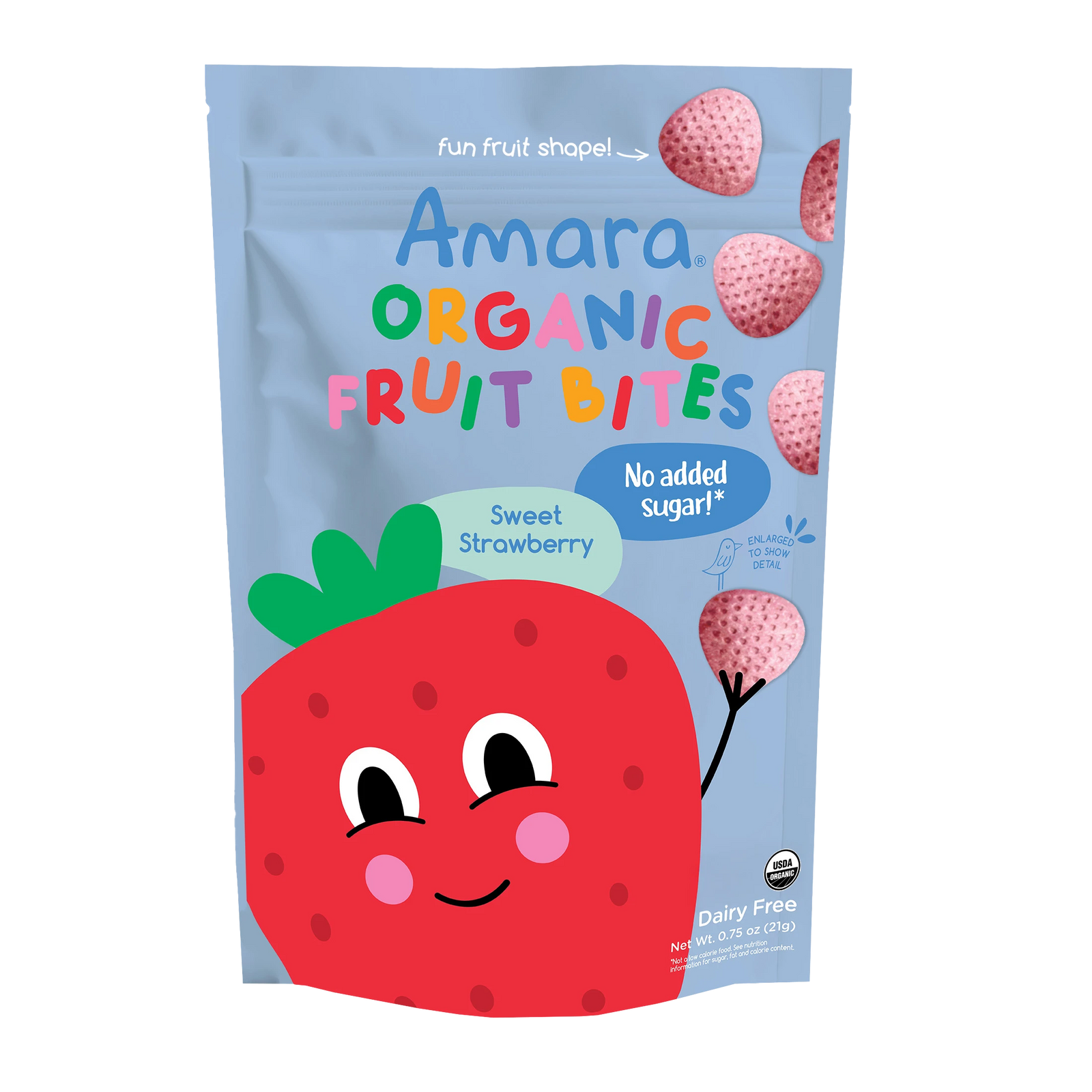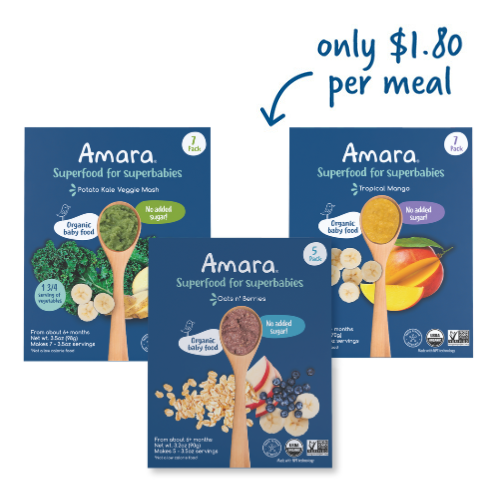
Interview with Amara’s Chief Nutritionist, Sonia Schiess
Changing the future of baby food is a team effort. Today we are chatting with Sonia, our chief nutritionist on staff here at Amara. She has been with us from the early days, and her passion for infant nutrition keeps our north star (bringing better baby food to every family) shining bright. Raised in Chile and educated in Europe and South America, she provides a unique global perspective on first foods. We thought it would be fun--and insightful-- to hear a bit about the journey that brought her here.
Hi Sonia. Thanks for taking the time to chat with us today. So, why don’t you tell us a bit about when you started studying nutrition and why?
Okay, I will start with the “why.” As a girl, my favorite room in the house was the kitchen and cooking fascinated me. My mother did not like to cook, so I started to experiment. I tried recipe after recipe and learned a lot from my own mistakes, from my godmother, and from others.
When I finished school, I asked myself what I should do with my culinary interests and abilities. So I enrolled in a hospitality school in Germany and studied for one year there. After that, I attended the french cooking school Cordon Blue in South Africa, where I learned so many wonderful lessons and skills.
But something was still missing. The idea of preparing nice meals for others to enjoy just wasn’t enough for me. I wanted to make a bigger impact. I started to get interested in how I could help people through food. That was the starting point for my lifelong interest in nutrition and wellness.
I remember you mentioning when you were studying nutrition, you were considered very “ahead of your time.” Tell me a bit more about that.
I grew up in South America, and so I started my first studies in nutrition in Chile. At that time, Chile’s main challenge was the issue of undernutrition in infants and children. Parents needed to know how to feed babies and children in a way that secured enough calories and protein for them to grow and thrive.
Later, I continued my studies in Germany and Switzerland, where the concerns were very different. In the more developed countries, we were seeing struggles with obesity, diabetes, constipation, cardiovascular diseases, etc. What a change! There people were not teaching about undernutrition but focusing on poor nutritional choices.
After finishing my studies on nutrition and dietetics, I worked in several health clinics where nutrition was a component of their therapies. I learned about wholesome nutrition and fasting therapies. Many people considered them as quite radical, alternative therapies. From my perspective, I was so excited and invigorated to see the results they were getting with their patients.
It was “ahead of the time” considering the conventional nutritional advice and practices that were given, and they were certainly on the fringe for South America when I returned. My new point of views were too alternative there. But with time, as the economic development of a country increases as it did in South America, unfortunately lifestyle and nutrition habits start to deteriorate. Health problems of developed countries increase, and the interest and need for healthy, “alternative,” wholesome nutrition also began to grow. My skills and training in wholesome food and nutrients quickly became sought after.
You studied complementary feeding, basically baby food, in 5 different European countries. What was the most surprising thing you discovered in that time?
Yes, I had the wonderful opportunity to gain my PhD while working on the European Childhood Obesity Program on Early Infant Nutrition. I analyzed the recommendations and introductions of complementary foods in five European countries. It was fascinating to see the different habits in different cultures, as well as how strongly parents followed the recommendations in each country.
During my work on this project, one thing that jumped out at me was when I analyzed the liquids babies drink during the first year of life. In our study, we observed that infants receiving energy-providing liquids drink less milk and take in fewer calories from complementary foods than infants who did not receive energy-providing liquids. Energy - providing liquids that had a negative effect were ones with added sugar or maltodextrin for example. We published an academic paper on it titled, “Intake of energy-providing liquids during the first year of life in five European countries.” This definitely opened my eyes about the negative health implications of serving infants and children sweetened beverages.
How can families start building healthy food transitions from the start?
It’s not easy to sum up in two or three sentences. It depends so much on the eating habits of the family, their lifestyle, preferences, and culture. One step every family can take today to improve their family’s health is to ensure everyone is eating the recommended daily amount of fresh fruits and vegetables. The current guidelines are at least 2 portions of fruit and 3 portions of vegetables per day, preferably sourced locally and in season.
To promote plant-based nutrition, whole grains like brown rice and whole wheat bread should be included as well as legumes like black beans, lentils, and chickpeas at least once a week.
Animal products should be more of an accompaniment than the main focus of a meal. This dietary breakdown is nicely illustrated and supported with plenty of resources in the USDA’s guide, “My Plate.”
Tell us how you feel about the phrase, “food is thy medicine.”
I think that is absolutely correct. With our food choices, we can damage our healthorwe can improve our health, wellbeing, and performance. I like to compare it with the gasoline I put in my car. If I put the right gasoline in my car, it will run optimally. If I put the wrong gasoline in my car, it was still run in the short term, but at a suboptimal level, and eventually the long-term effects will take hold. During my studies and professional experience, I’ve seen firsthand so many examples of how food influences one’s health.
But food choices have implications beyond just the direct impact on our health when eating. Food also provides a sense of connection with others, well-being, cultural heritage, and gratitude. We are also beginning to realize the social and political impacts of various growing, farming and animal raising methods. How we produce food leaves an environmental footprint that also affects our health and the health of our planet. Therefore, these choices become not so black and white. But one thing we can be sure of is that food touches us all, and the answers are ever-evolving.
On a mission with Amara:
The foods we give our babies in the first two years are critical to helping them develop healthy habits for life. If we feed our future foodies whole foods, we can change the way our future generations eat– and think. We know that food preferences are created at an early age, so let’s teach our babies the taste, texture and nutrients of fresh foods. Homemade baby food is always the best, but when homemade baby food is more of a dream than a reality, you can count on Amara baby food to make homemade, possible. LEARN MORE.









Leave A Comment